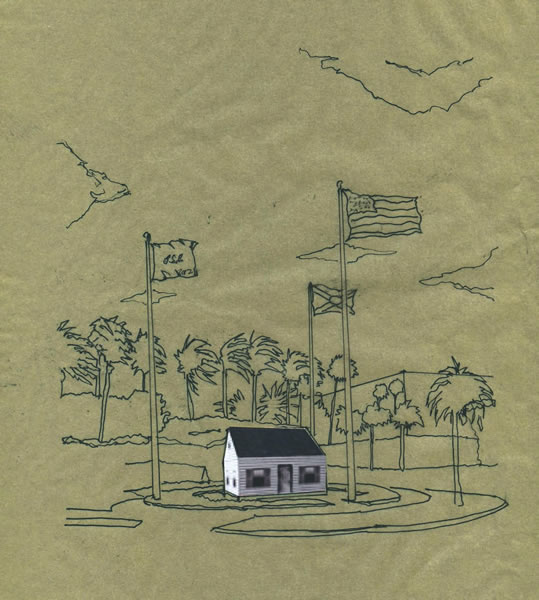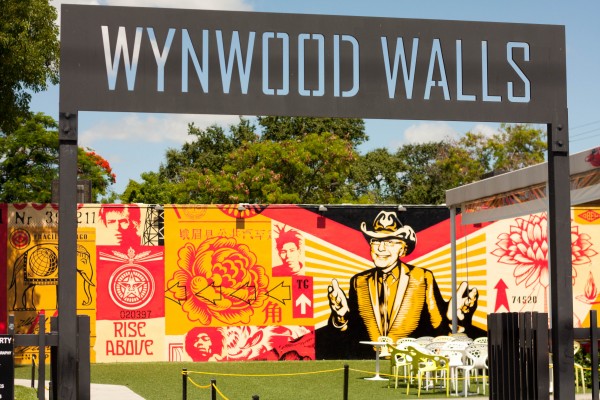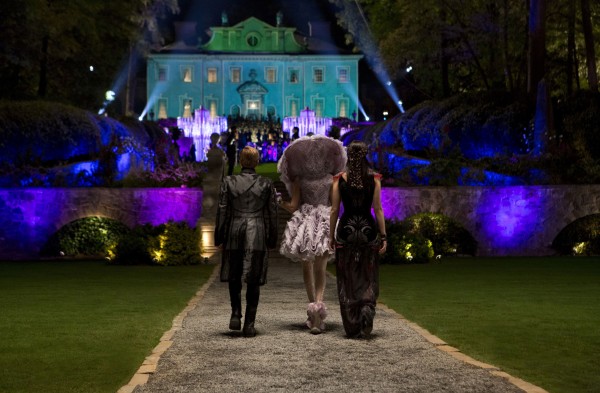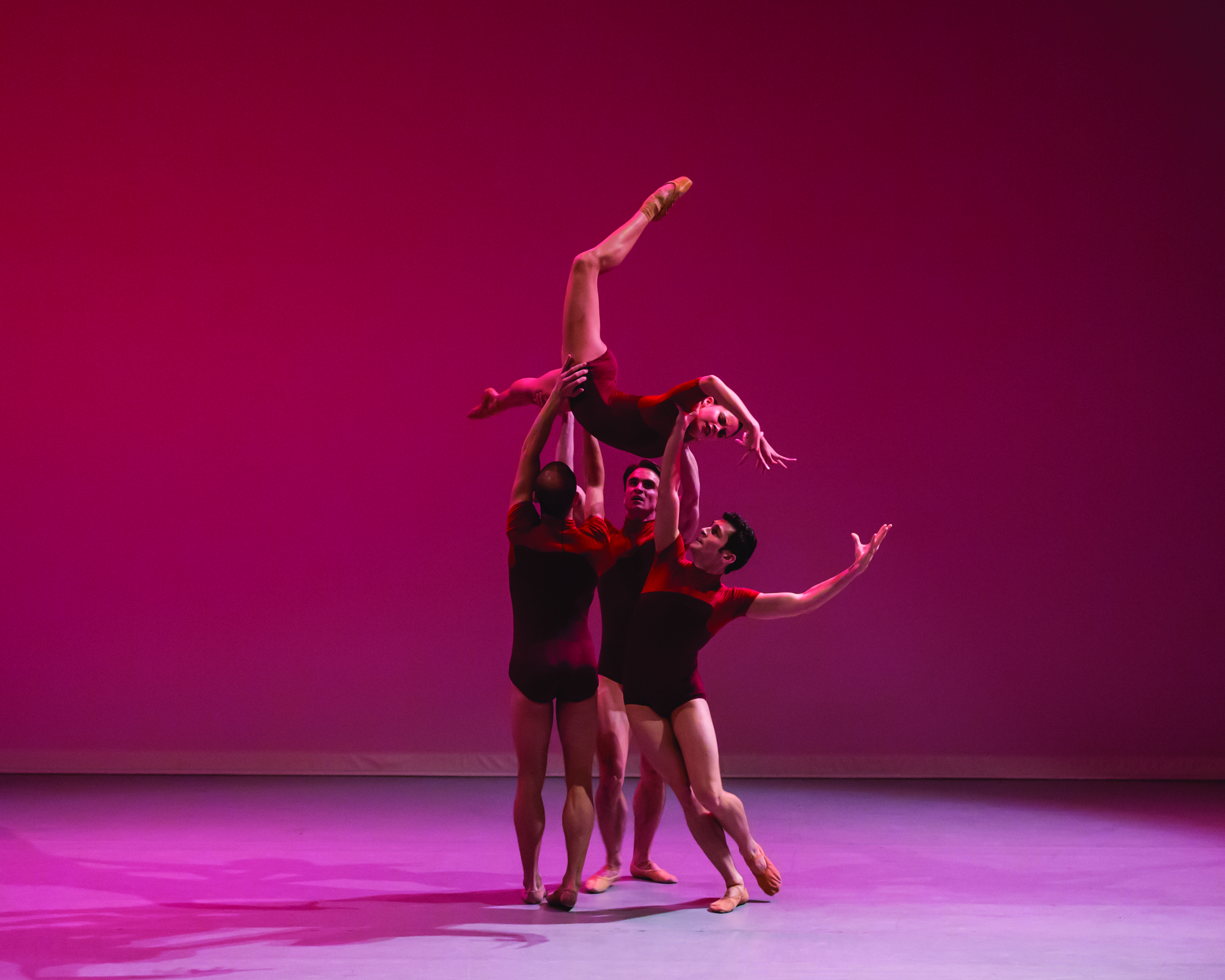The avant-garde and historical blend seamlessly in the city’s first public art project, which comes to life on the doorstep of The St. Regis Bal Harbour Resort.- By Risa Merl
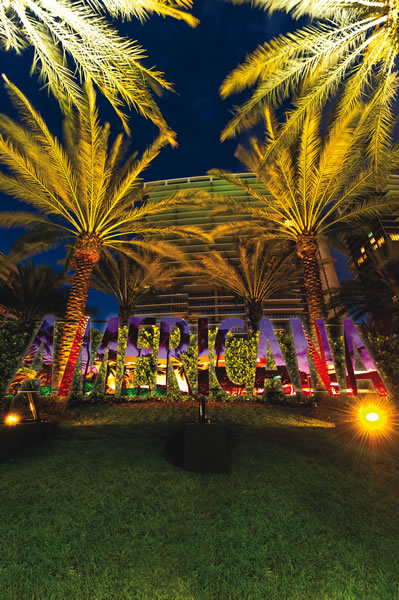 What does it mean to be American? This is the debate that Miami-based artist George Sánchez-Calderón intended to spark with his “Pax Americana” installation of large-scale sculptures that launched Bal Harbour’s inaugural public art program in October 2012. His is the first in a planned multi-year series of commissions from the “Unscripted” program, which seeks to recognize talented artists while growing Bal Harbour as a creative destination.
What does it mean to be American? This is the debate that Miami-based artist George Sánchez-Calderón intended to spark with his “Pax Americana” installation of large-scale sculptures that launched Bal Harbour’s inaugural public art program in October 2012. His is the first in a planned multi-year series of commissions from the “Unscripted” program, which seeks to recognize talented artists while growing Bal Harbour as a creative destination.
“We are looking for artists to engage with the space in order to shed new light and add context to the area,” says Claire Breukel, the program’s curator, who has curated exhibitions around the world.
Though a first for Bal Harbour, public art installations such as Sánchez-Calderón’s are not new to Miami. Each December, international artists and art aficionados flock to the sun-drenched city, galleries and museums become the hot place to be and public artworks are customary during the creative celebration known as Art Basel.
“Since the inception of Art Basel [in Miami] ten years ago, it’s tremendous how the arts community in Miami-Dade County has evolved,” says Carolyn Travis, Bal Harbour’s executive director of tourism and creator of the “Unscripted” program. “Every museum in the area has had a multi-million dollar expansion and there’s this amazing emerging artists community—we really wanted to celebrate it.”
The momentum created by Art Basel inspired Travis, but her vision for Bal Harbour’s public art program would transcend the festival season.
“The arts in Miami have completely evolved, but during the time of non-Basel—if it’s not December—there’s not enough attention paid to it,” she says. “We wanted to be able to create something new and serve as a platform for these artists during the other 11 months of the year.”
Americana Revisited
In its simplest sense, Americana are things that conjure up American history, folklore and culture. These can be artifacts or ideas, old or new—items as nostalgic as apple pie or as current as reality TV. For Bal Harbour and The St. Regis Bal Harbour Resort, the word takes on a particular significance; the first hotel to inhabit the Collins Avenue address was the iconic Americana Hotel, which opened in 1956.
Sánchez-Calderón’s takes his viewers back to that post-war era with “Pax Americana.” The two sculptures in this installation are representative of the artist’s experience in large-scale, publicly visible works involving signage and architectural elements. The first, aptly named “Americana,” is made up of towering six-foot tall stainless steel letters spelling out the appellation and resides in front of The St. Regis Bal Harbour Resort.
When the Americana Hotel opened, it was the height of luxury and innovative design, and only the second hotel to arrive in the sleepy beach town of Bal Harbour. Designer Morris Lapidus, who also designed the similarly iconic Fontainebleau and Eden Roc hotels further down Collins Avenue, experimented in the Americana with a glass-enclosed terrarium meant to give the impression of a rain forest.
The Americana Hotel lived up to its name by hosting important cultural and political events, including three nationally televised AFL-CIO Constitutional Conventions helmed by Presidents Kennedy, Johnson and Nixon, respectively. Sánchez-Calderón’s “Americana” pays homage to the classic hotel, but as a conceptual artist, there is always more to his artworks than meets the eye.
“George Sánchez-Calderón’s projects are developed on extensive research and, therefore, [are] always layered with references,” Breukel says. “ ‘Pax Americana’ takes into consideration the history of the site, and it also references the coming election and questions the notion of a contemporary Americana. This artwork and his second installation, ‘Levittown House,’ are both visually accessible and conceptually provocative. For a work of art placed in a busy public street such as Bal Harbour’s Collins Avenue, this is ideal.”
Sánchez-Calderón cites the 2012 presidential election, held three weeks after “Pax Americana’s” unveiling, as a strong inspiration for the second piece of his installation.
“The sculptures are intended to open up and invite a discourse that is an important part of any election: What does it mean to be American?” he says.
Sánchez-Calderón challenges viewers to examine Bal Harbour’s past alongside its future in order to find the answer to this question.
The “American Dream” is a common talking point in any election, even taking center stage in 2012 presidential race. In the late 1940s, this dream often involved young soldiers returning from war and in need of a home for their families. Abraham Levitt and his sons came to the rescue by mass-producing simple, utilitarian and affordable homes on Long Island, New York. Regarded as the first planned community, Levittown is emblematic of American suburbia of the 1950s. Bal Harbour also was born in this era of post-war surge, becoming a city in 1947.
“Bal Harbour and Levittown were incorporated within a year of each other,” Sánchez-Calderón says. “Many people associate Bal Harbour with a shopping mall, but it’s a city with a long history.”
This historical concurrence inspired his second piece, “Levittown House.” While stylistically different from “Americana,” the second work is indicative of the artist’s experience in sculptures that utilize architecture and iconography. He created a scaled replica of a Levittown home constructed in wood and covered in digital prints. The 3-D form has the shape of a house, but every surface is flat, with the appearance of the house conveyed in large-scale photocopies.
“It’s playing with the idea of 2-D, 3-D,” he says. “It has a bit of discourse of what is sculpture, painting, art.”
Museum Accolades
“I’m lucky and cursed; I work with things that make sense at the time,” Sánchez-Calderón says. “I work in different materiality. In [the case of ‘Pax Americana’], it’s wood, metal, steel and digital images.”
The Museum of Contemporary Art (MOCA) in North Miami is home to a collection of Sánchez-Calderón’s work, including one based on Xerox. Sánchez-Calderón’s work was first exhibited in the museum in 2006, in “Metro Pictures, Part Two,” which featured photos about the urban experience. Since then, MOCA has acquired works by the artist that range from photography to digital art to wood sculpture. The diverse collection of Sanchez-Caldeon’s work held by the museum highlights his expertise working in various materials.
“Bal Harbour made an exceptional choice in their selection of George for an artist in their new program,” says Bonnie Clearwater, MOCA’s executive director and chief curator.
Sánchez-Calderón has a new museum exhibit going up in November 2012, this one at the Miami Art Museum.
“It’s their last show at this location before they move the museum,” he says, referring to the museum’s plans to relocate to an expanded facility in 2013. His piece for this exhibit, a sign bearing the words “CenTrust Bank,” is in the same family of large-scale signage sculptures such as “Americana.”
Living History
That “Pax Americana” stayed true to the artist’s existing portfolio was one of the selling points for Breukel and the art experts she consulted with when it came time to choose artists for “Unscripted” commissions. This was also true for the second artist selected, Christy Gast.
“What I think is interesting about both Sánchez-Calderón and Gast was the projects that they won with fit into the greater context of their work. It wasn’t a random thing created within their work [to win],” Travis says. “Also, what was so beautiful about both was that they had historical context to the actual destination.
“Sanchez-Calderón crossed barriers [with ‘Pax Americana’]. It is avant-garde, contemporary art, but at the same time, it talks about the history of Bal Harbour, suburbanism and architecture,” she continues. “I think that was an important component, that it had a huge sense of place.”
Christy Gast follows this path of historical relevance with her installations for the series. A sculptor and video artist, Gast also has worked extensively with performance art, specifically that relating to the significance of the site she is documenting. Her project for “Unscripted” opening spring 2013, “Self Portrait as Barefoot Mailman,” follows in this vein.
“The barefoot mailman legacy is of a real life mailman that for a time delivered mail by walking and rowing the coastline between Miami and Palm Beach,” Breukel explains. “Gast uses this story as the basis for her larger-than-life sculpture that is, in fact, herself dressed as this character. There is a final twist to the piece as well … let’s just say it’s monumental.”
Endeavoring to deliver more than visually compelling, even monumental art, “Unscripted” also has a public programming element aimed to engage viewers on another level.
“We really wanted to be able to not just put an installation up, but really educate those that were around us as to what [the art] meant—and give an artist’s perspective or a curator’s perspective,” Travis says. “I think sometimes there is a disconnect between what is going on in a really avant-garde art community and what consumers who don’t really closely follow that community understand. So it’s about creating an educational opportunity.”
The first of such programming kicked off during the debut evening of “Unscripted” with a panel discussion between Smithsonian curator Dr. William Bird and Sánchez-Calderón. Future programming will include artist panel sessions, studio visits and meet-and-greets.
With the first two commissions by Sánchez-Calderón and Gast booked, “Unscripted” has plans to continue its mission to foster emerging local talent and introduce the community to various artists.
“We are celebrating the local artists and really helping them break through,” Travis says. “We’re really trying to help the artists in any way that we can. Ideally, we’ll look back a few years and see all the artists that have gone through this program and see how this experience has changed their paths.”




